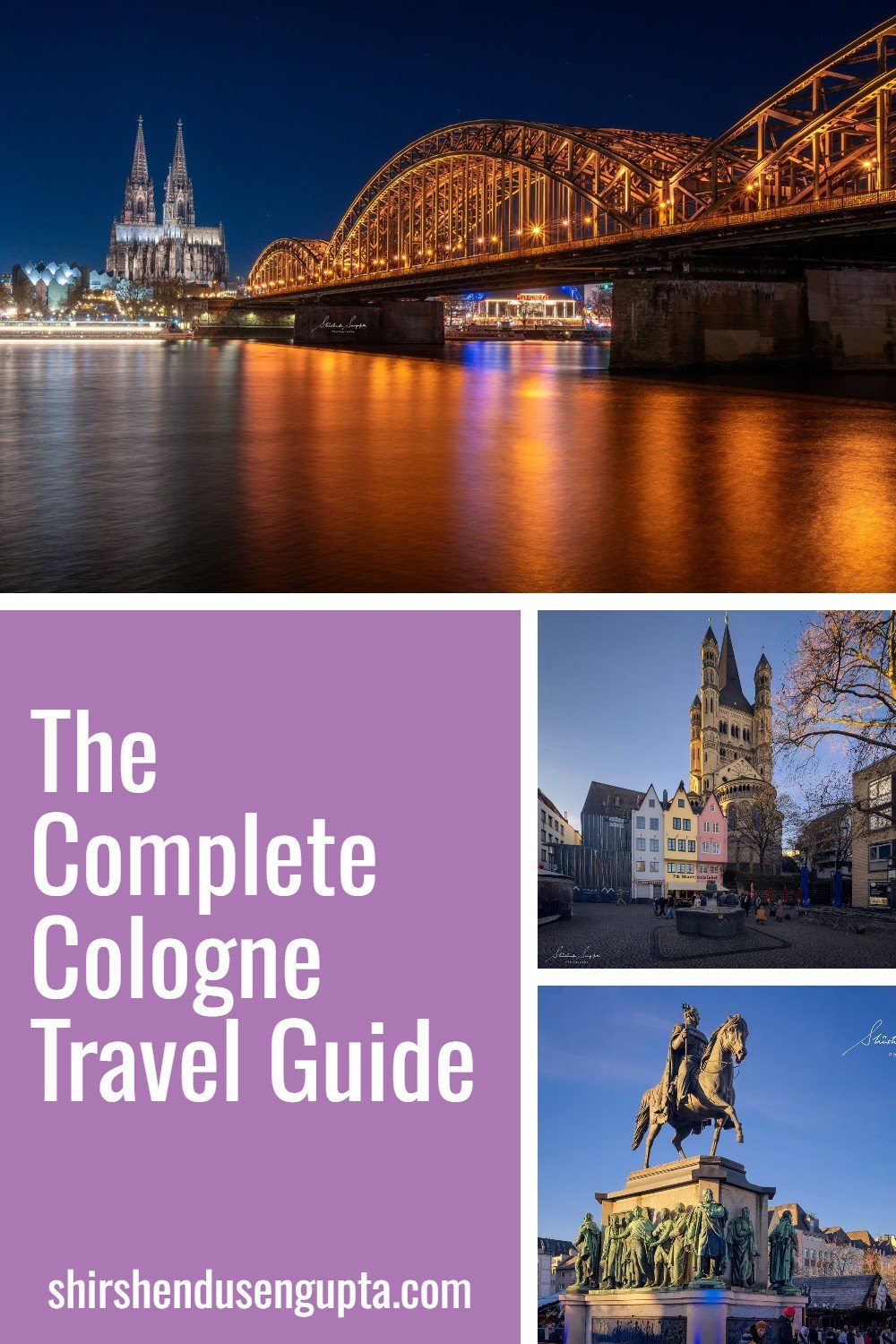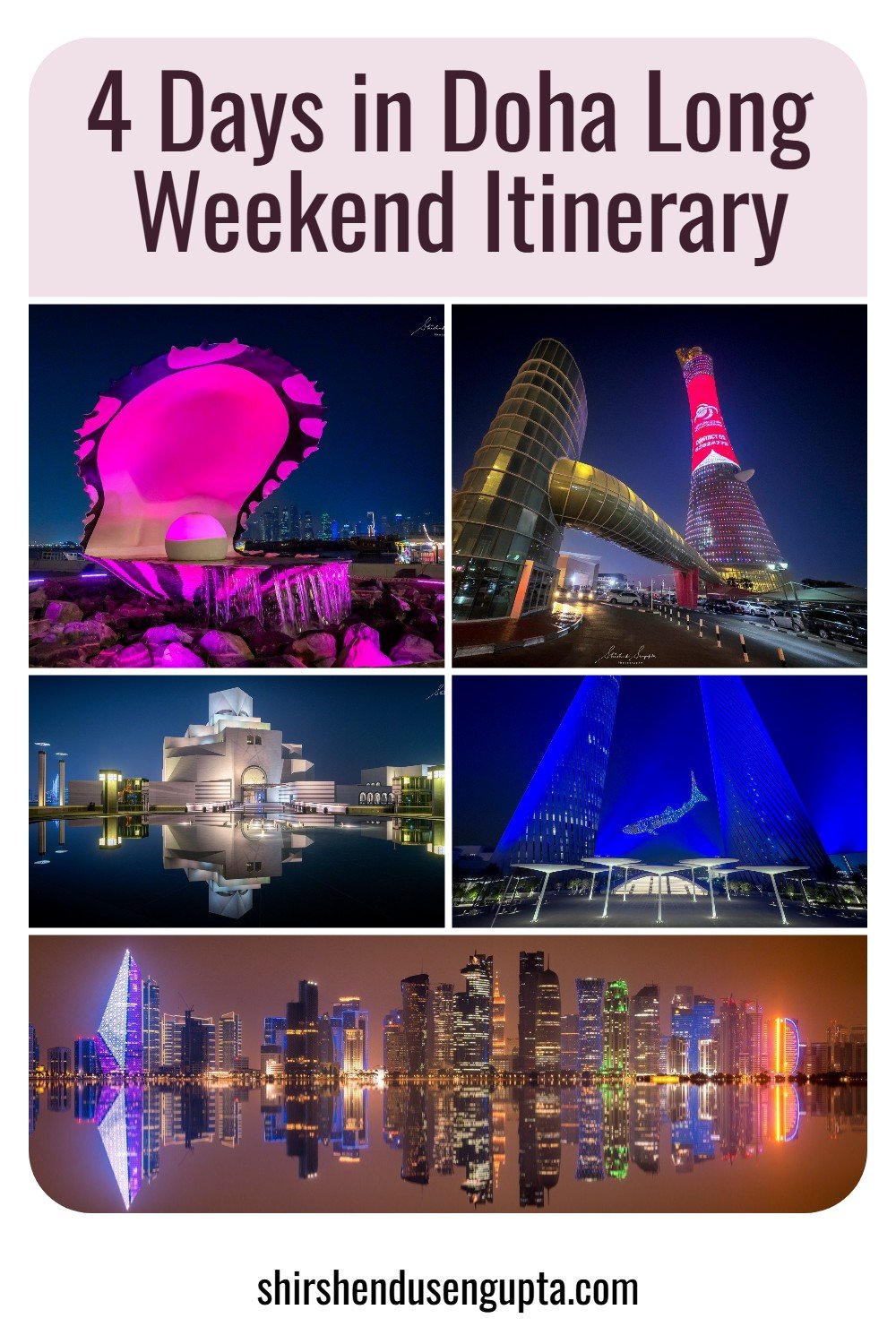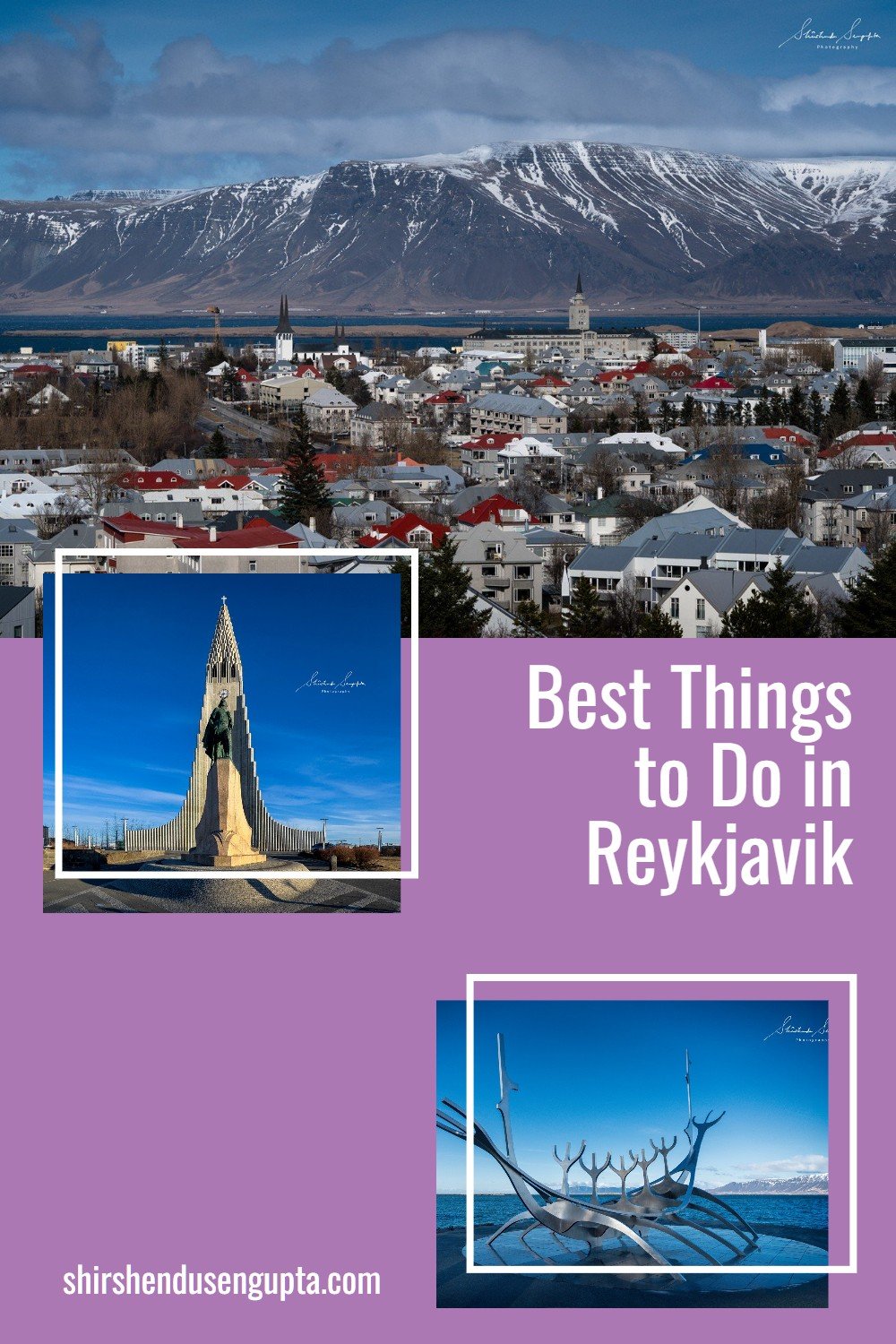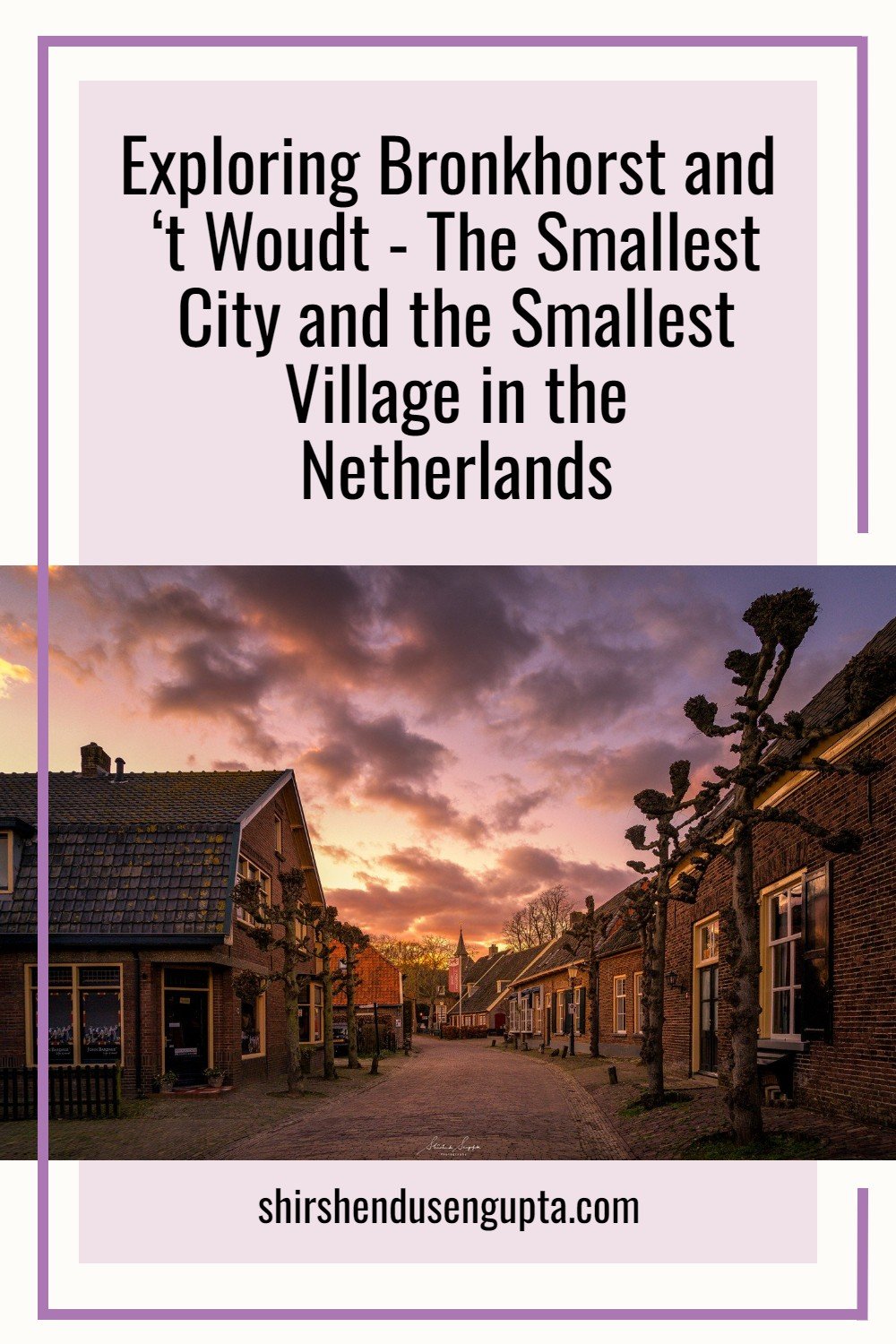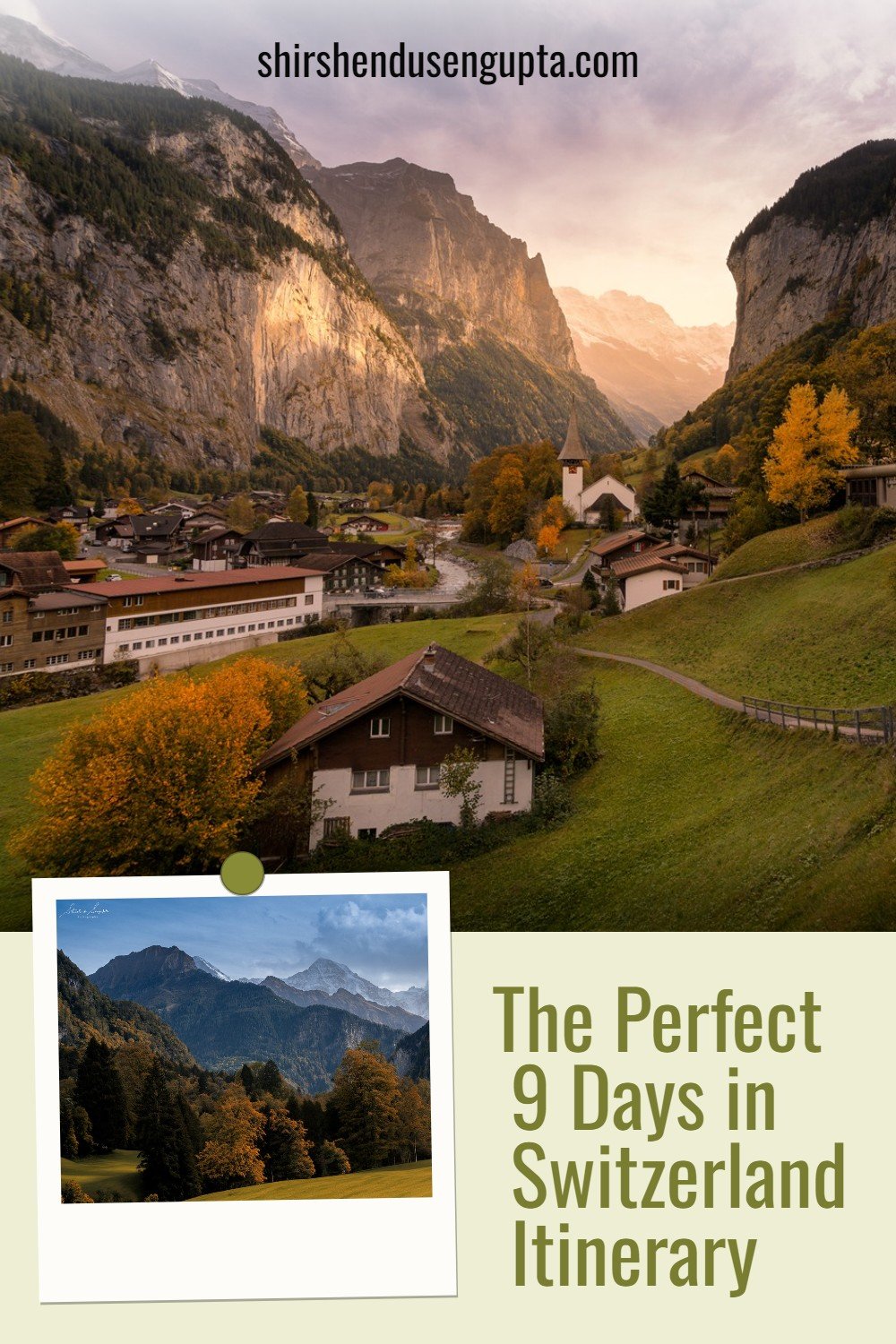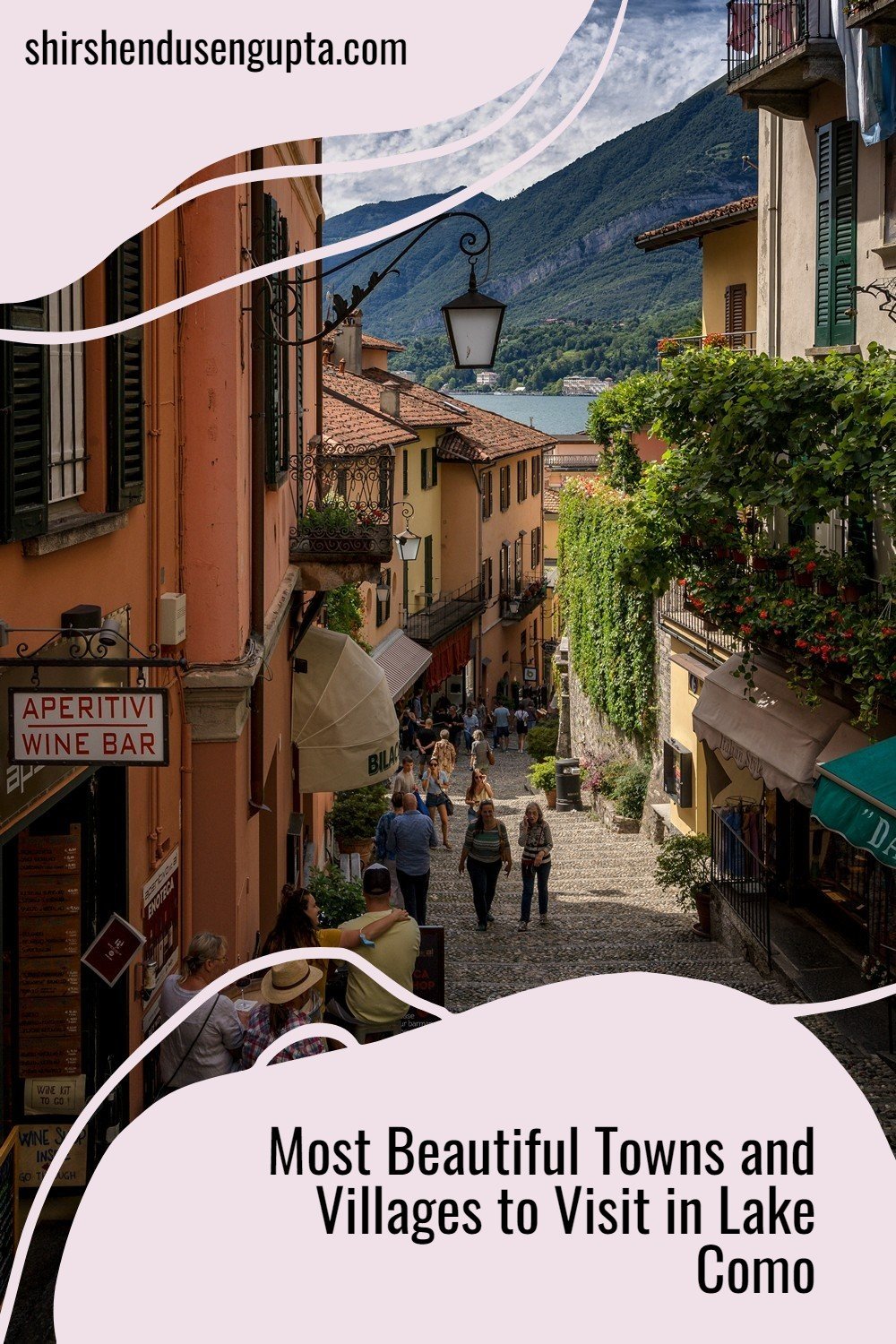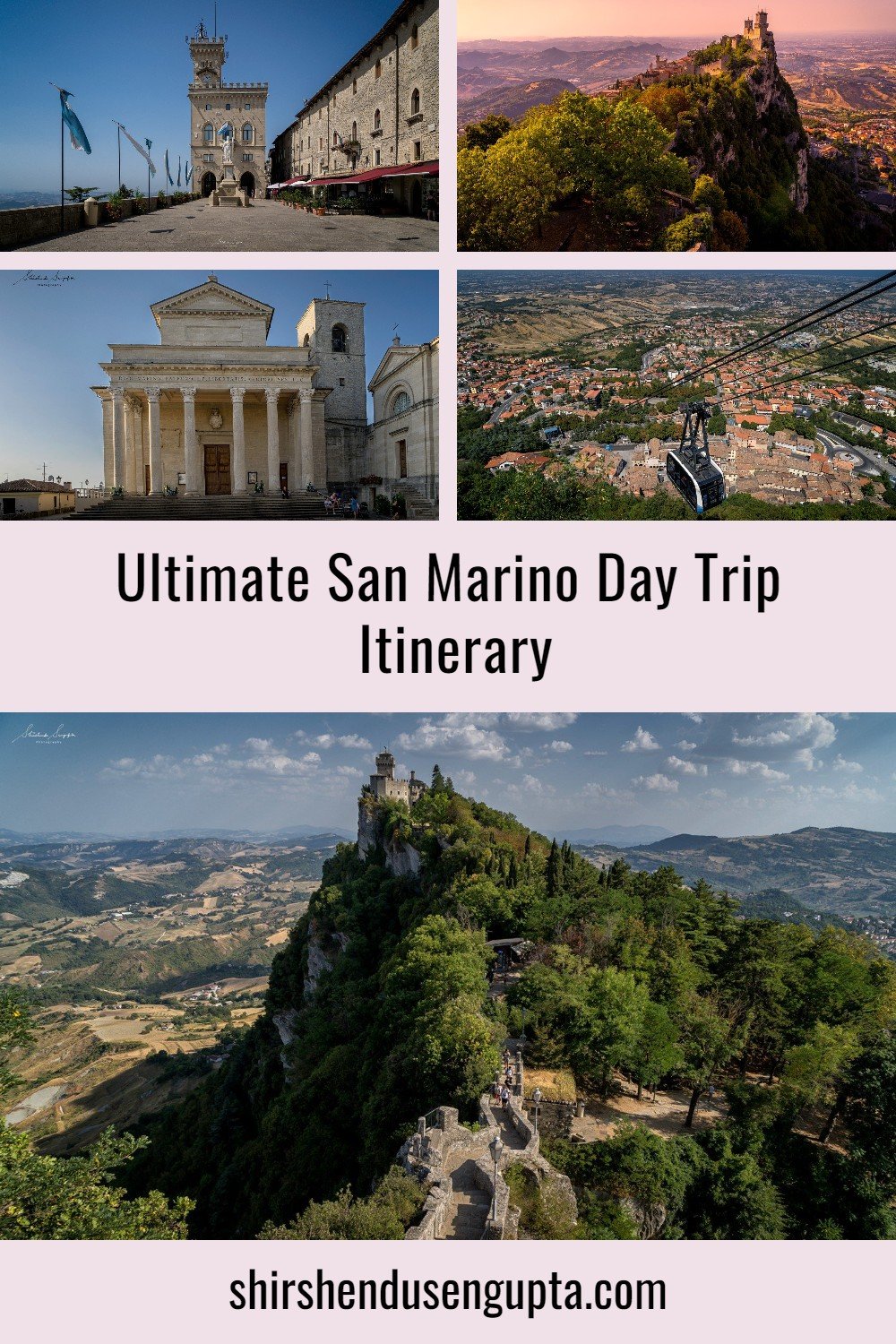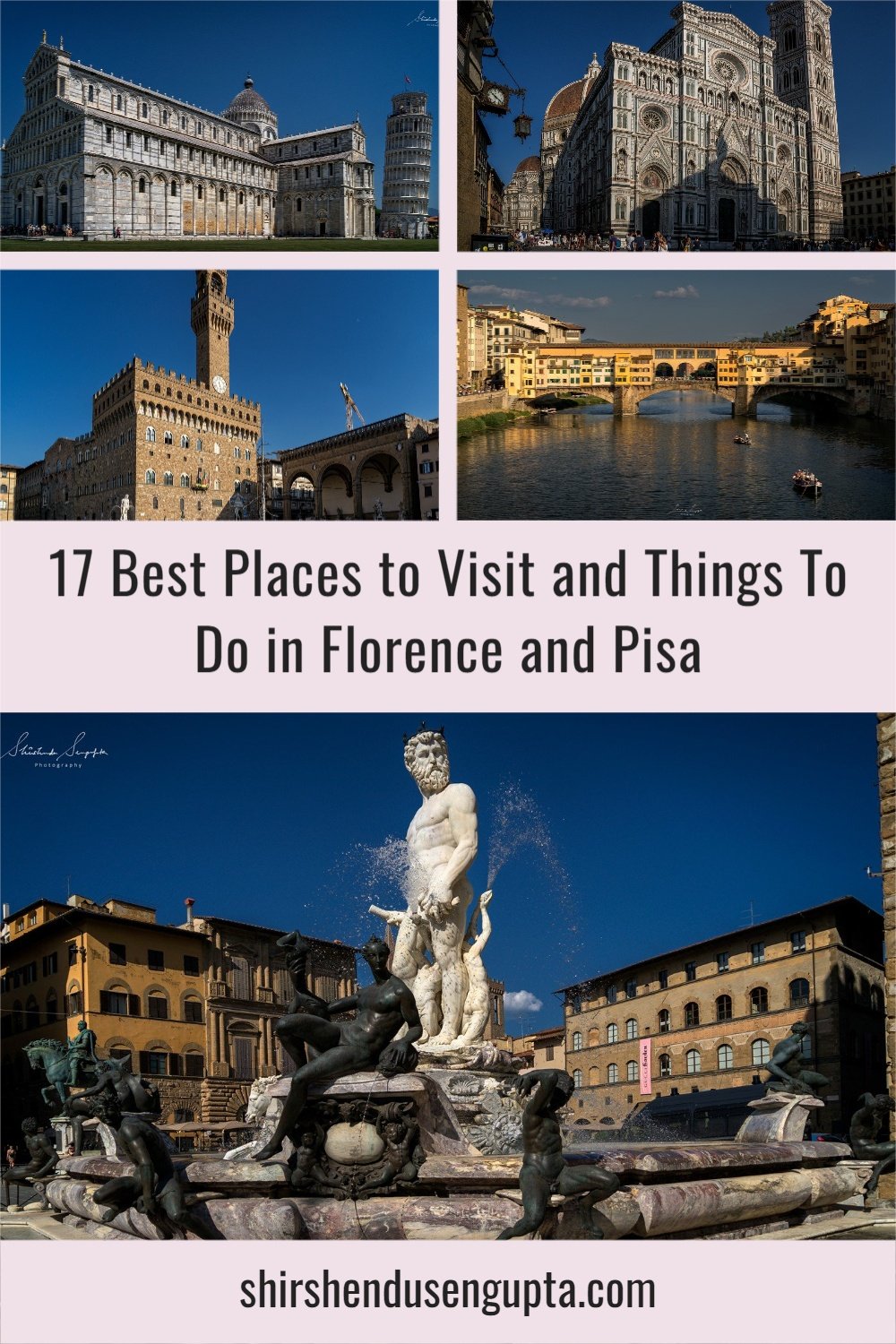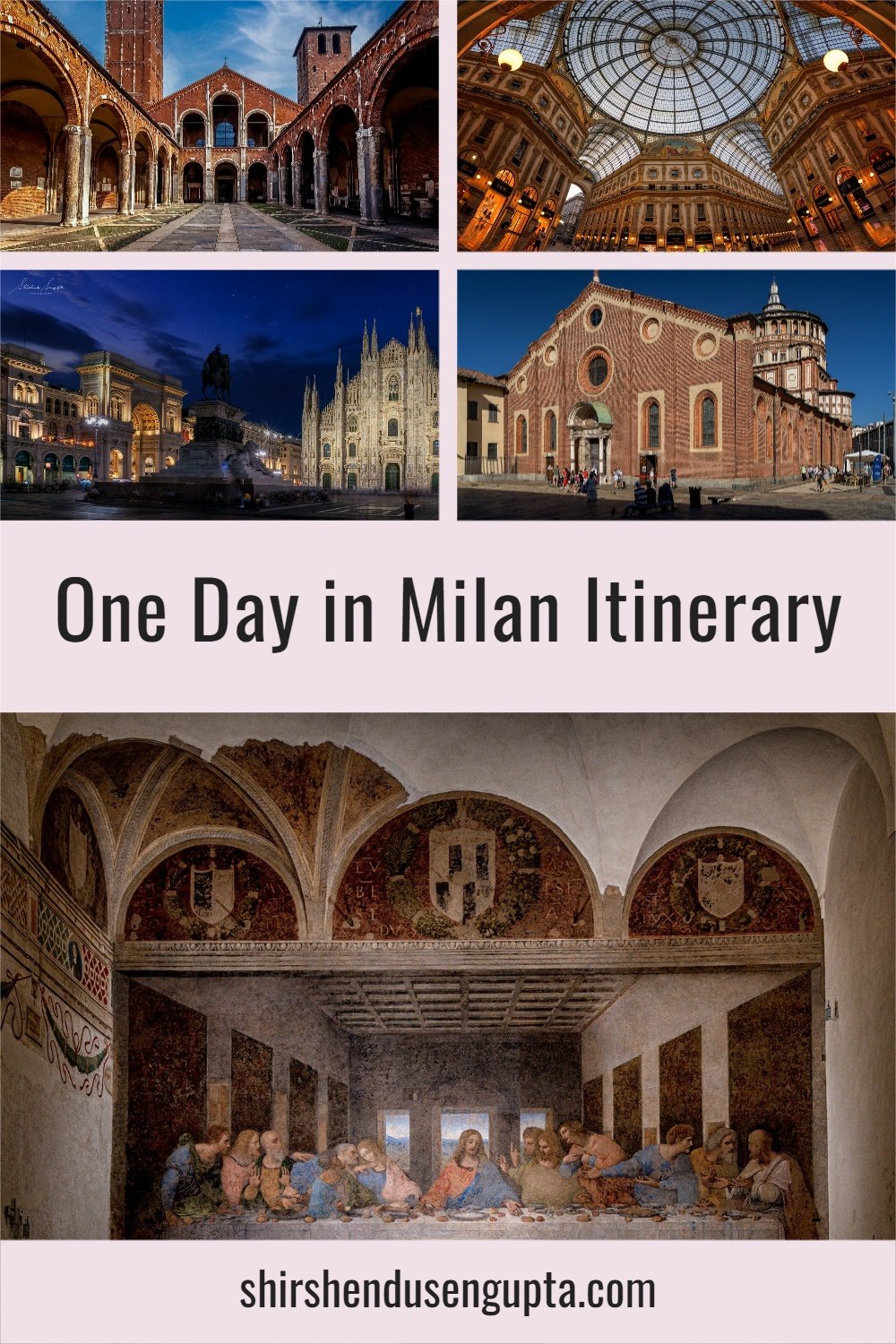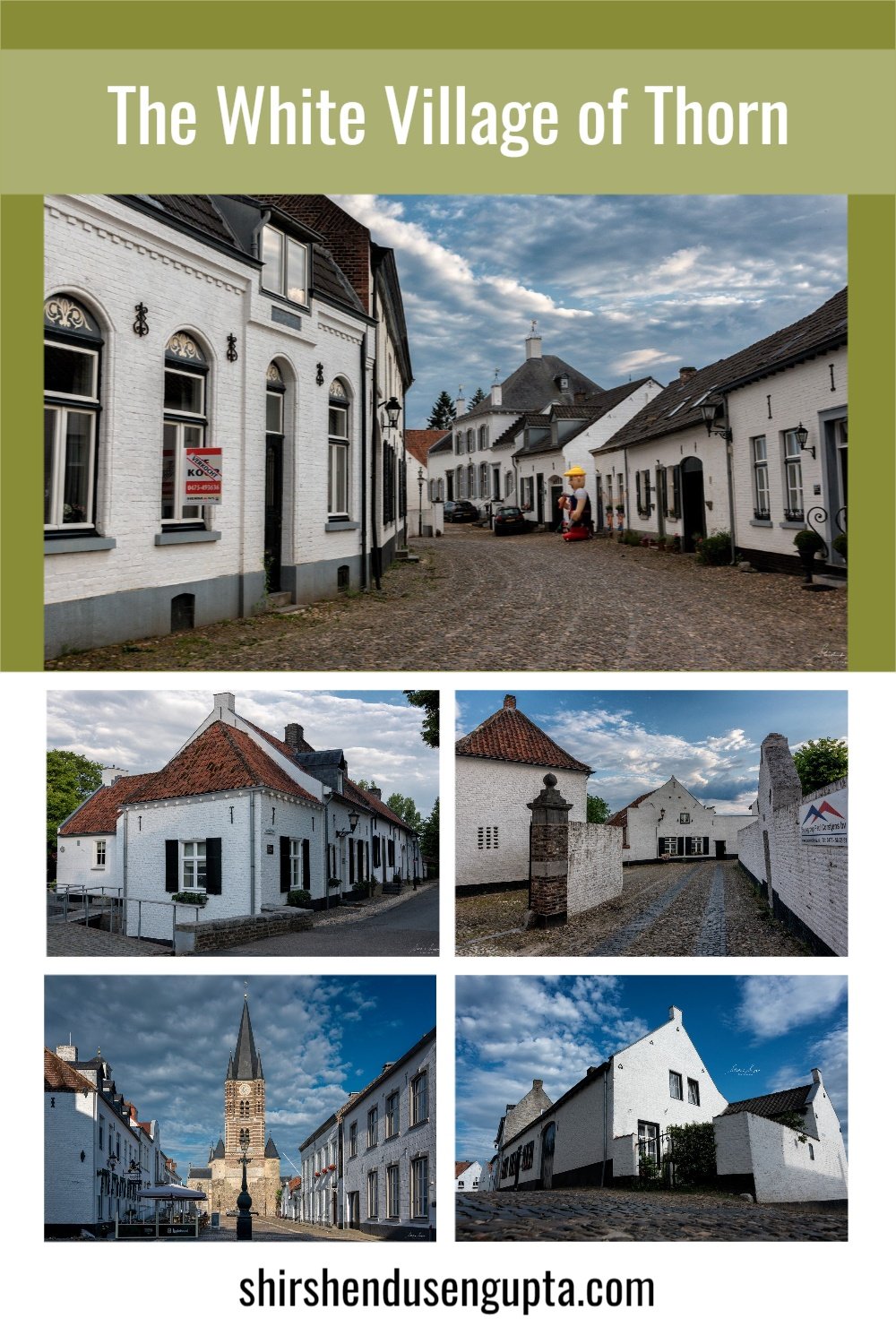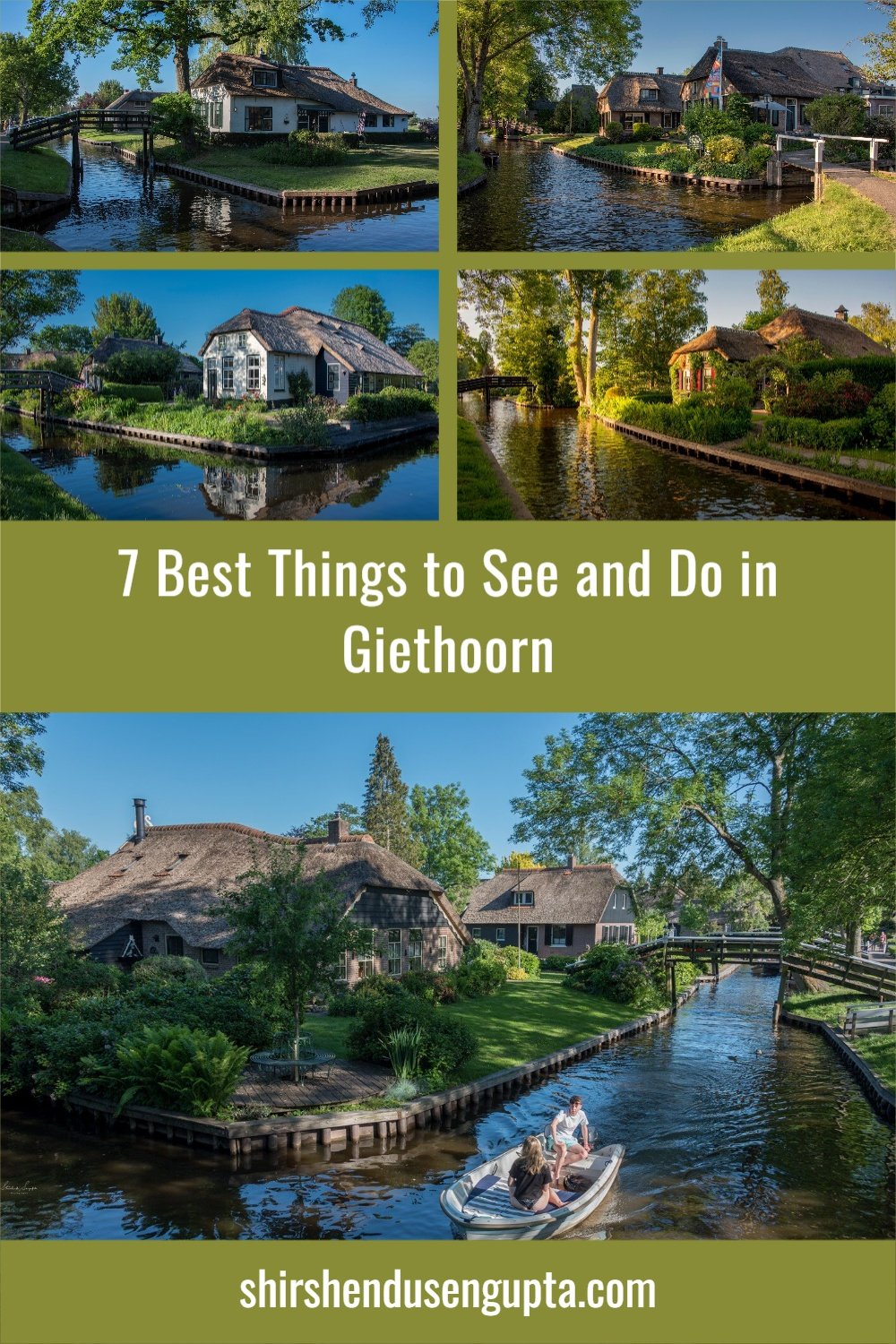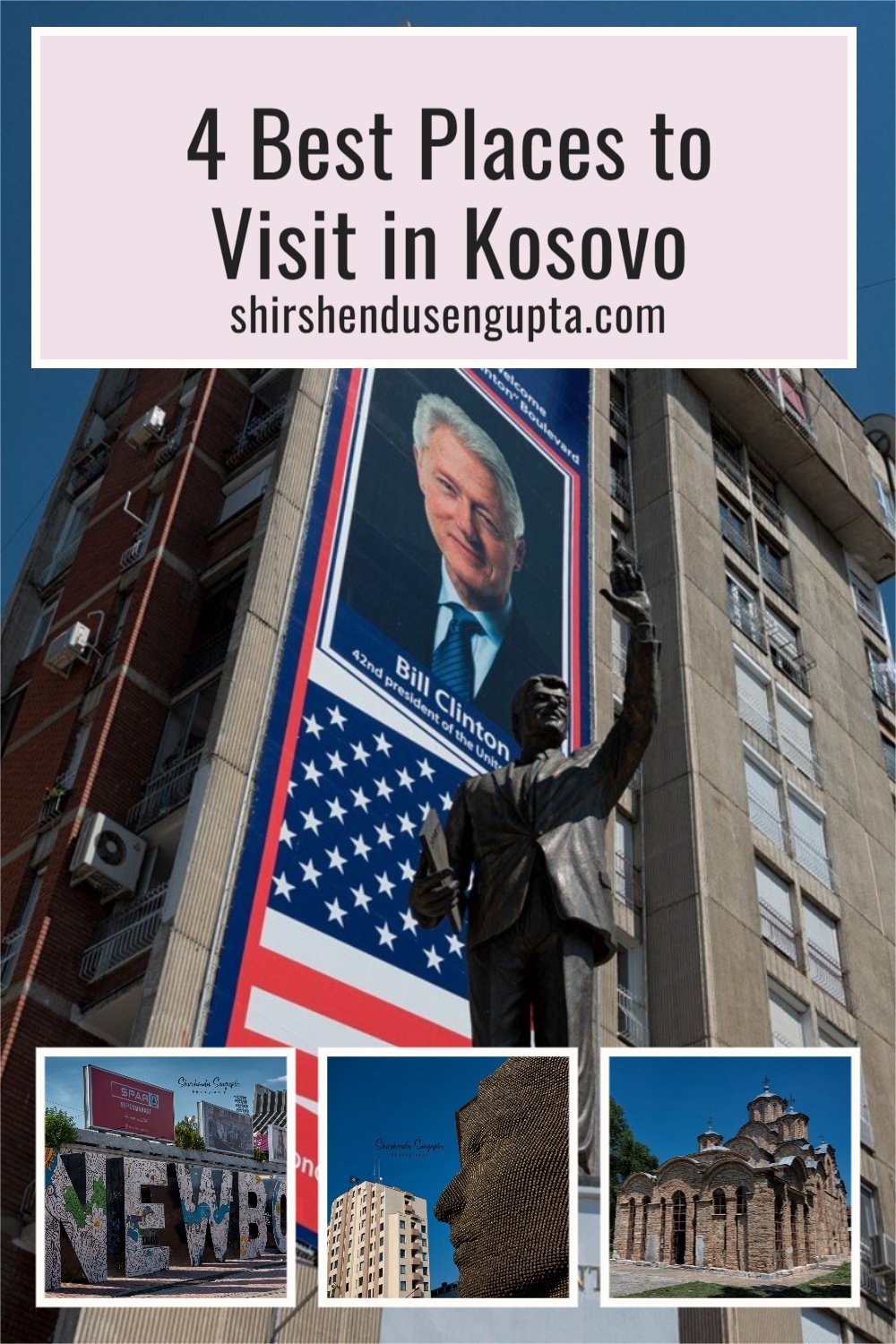The Ultimate Edinburgh Travel Guide | 28 Best Things to Do and See in Edinburgh | Top 28 Sights and Attractions in and around Edinburgh, Scotland, United Kingdom
Prologue
During a magical Christmas, we embarked on an unforgettable adventure, The British Isles in 2 Weeks | 4000 km Road Trip across Great Britain (England, Scotland, Wales) and Ireland (Republic of Ireland, Northern Ireland) from the Netherlands | Itinerary, Tips, and Tricks. What began as a simple plan soon turned into one of the most extraordinary journeys of our lives - a blend of coastal drives, medieval towns, misty castles, and heartwarming encounters that revealed the true soul of these storied isles. Every mile brought a new landscape, every turn whispered a new story, and every city left behind a piece of our hearts. So, based on our experience, today I’m going to take you along with me on a ride across the 28 best things to do in Edinburgh. Let the journey begin!
Welcome to Scotland
Welcome to Scotland, a land of breathtaking landscapes, rich culture, and a storied past that stretches back thousands of years. Located in the northern part of the United Kingdom, Scotland is a country where misty highlands meet ancient castles, where vibrant cities pulse with modern energy while preserving deep-rooted traditions.
Scotland’s history is as dramatic as its scenery, shaped by fierce clans, Viking invaders, and battles for independence. It was once a collection of warring tribes before unifying under the Kingdom of Alba in the 9th century. By the 13th and 14th centuries, legendary figures like William Wallace and Robert the Bruce led the charge against English domination, culminating in iconic events like the Battle of Bannockburn. Although the crowns of Scotland and England were united in 1603 under James VI of Scotland (who became James I of England), Scotland retained its distinct legal and educational systems after the 1707 Act of Union. Today, the country proudly maintains its cultural identity, celebrated in its music, kilts, Gaelic language, and love of storytelling. Whether you’re exploring medieval alleyways in Edinburgh or wandering across the Highlands, Scotland promises adventure, history, and the warmest of welcomes!
About Edinburgh
Edinburgh, the enchanting capital of Scotland, is a city where centuries of history seamlessly blend with a modern, vibrant spirit. Perched on a series of volcanic hills and dominated by the iconic Edinburgh Castle, the city has been Scotland’s capital since at least the 15th century. However, its roots run far deeper; archaeological finds reveal human settlements dating back to the Bronze Age. The name “Edinburgh” is thought to derive from the ancient fortress "Din Eidyn," established by the Gododdin people in the 7th century. During the medieval period, the city became a royal residence and a center of political and religious power. The Old Town, with its narrow wynds and cobbled streets, tells tales of the Reformation, witch trials, and Jacobite uprisings, while the neoclassical grandeur of the New Town reflects the Enlightenment era, when Edinburgh earned the nickname “Athens of the North.”
Today, Edinburgh is world-famous for its annual festivals, including the Fringe, the world’s largest arts festival, its literary legacy, and its blend of Gothic and Georgian architecture. Whether you’re wandering through the mysterious closes of the Royal Mile or meandering through the Dean Village, Edinburgh invites you to step into a storybook where every stone has a tale to tell!
28 Best Things to Do and See in Edinburgh
1. Start with exploring the Dean Village
Nestled in a tranquil valley along the Water of Leith River, Dean Village is a picturesque gem just minutes from Edinburgh’s bustling city centre. Once known as the "Water of Leith Village," this area was founded in the 12th century when it was gifted to the Dean monks by King David I. For centuries, it thrived as a milling village, with water mills powered by the river driving grain production. You can still see remnants of this past - look out for stone plaques adorned with baked bread and pies, symbols of its baking heritage. The name “Dean” is derived from the Old English word “denu,” meaning deep valley. The area eventually fell into decline in the 19th century but underwent a major revival in the 1970s and is now one of Edinburgh’s most sought-after residential areas.
Strolling through Dean Village feels like stepping back in time, with cobbled streets, quaint cottages, and dramatic sandstone buildings tucked into lush greenery. This hidden oasis offers a charming contrast to the urban energy of Edinburgh, making it a must-see for history lovers, photographers, and anyone seeking a peaceful escape steeped in heritage.
2. Walk over the Bell’s Brae Bridge
Bell’s Brae Bridge is a charming 19th-century stone arch bridge nestled within Dean Village, offering timeless views of the Water of Leith and the iconic Well Court buildings. Named after the steep hill it spans, ‘brae’ meaning slope in Scots, the bridge was built in 1813 to improve access across the river for mill workers and local residents. Historically, Bell’s Brae was a crucial link in Dean Village’s milling network, connecting the village’s grain mills and workshops that once flourished along the riverbanks.
Walking across the bridge today, visitors can almost hear the echoes of horse-drawn carts transporting sacks of flour. The structure’s stone balustrades and mossy edges add to the atmospheric charm of this peaceful corner. From the bridge, one can take in a picture-perfect view of the mill buildings reflected in the river, making it a favourite spot for photographers and romantics alike. Bell’s Brae Bridge may be small in scale, but it holds a significant place in the story of Edinburgh’s industrial past. With the sound of flowing water and birdsong replacing the clatter of machinery, it now offers a moment of stillness and reflection for those exploring the heritage-laden paths of Dean Village and the Water of Leith.
3. Take a walk through Hawthornbank Lane
Hawthornbank Lane is one of Dean Village’s most photogenic streets - a narrow, winding lane that descends gently alongside the Water of Leith, framed by ivy-clad stone buildings and flowering gardens. Historically, it provided access to the mills and homes of the villagers, forming part of the practical infrastructure that sustained Dean Village’s industrial era. The lane’s name likely comes from the hawthorn bushes that once lined its edges, contributing to its lush and rural ambiance even within the urban boundaries of Edinburgh.
Today, this picturesque alleyway is a favourite spot for Instagrammers and artists drawn to its old-world charm and peaceful surroundings. You’ll pass beautifully preserved stone cottages with brightly painted doors and wrought-iron lanterns that feel like remnants from another time. A walk down Hawthornbank Lane is particularly enchanting in the early morning or golden hour, when light filters through trees and reflects off the river’s surface. The lane embodies the spirit of quiet historical continuity, untouched by the rush of modern life. It’s a perfect starting point for a riverside walk or a contemplative escape from the city’s tourist bustle, showing how Edinburgh seamlessly blends the past and present in its most unexpected corners.
4. Check out the view from the Water of Leith Walkway Bridge
The Water of Leith Walkway Bridge is one of several charming pedestrian bridges that crisscross the Water of Leith, Edinburgh’s 24-mile river stretching from the Pentland Hills to the Port of Leith. These footbridges offer scenic vistas of the lush riverbanks and tranquil flow, connecting walkers to a network of green corridors that wind through the city’s heart. The bridges are relatively modern additions, developed as part of the Water of Leith Conservation Trust’s mission to revitalize and preserve the river’s natural and cultural heritage. Some bridges trace over older paths used by millers, fishers, and merchants centuries ago.
Today, they offer a safe and scenic crossing for joggers, birdwatchers, and curious explorers. From these bridges, you can spot herons, kingfishers, and sometimes even otters, all signs of the thriving ecosystem that now exists due to concerted restoration efforts. The walkway itself connects major Edinburgh landmarks like Dean Village, Stockbridge, and the Scottish National Gallery of Modern Art. Whether you’re taking a leisurely walk or embarking on a cycling adventure, pausing on one of these bridges offers a moment to appreciate how nature and city life coalesce in Edinburgh’s uniquely accessible green haven.
5. Get a glimpse of the Water of Leith Weir
Just downstream from Dean Village, the Water of Leith Weir is a striking and historically significant feature of Edinburgh’s river system. A weir is a low dam built across a river to regulate water flow, and this one was vital to the operation of the mills that once powered the city’s economy. Constructed in the 18th century, the weir helped direct the Water of Leith into mill lades (small channels that guided the water to turn mill wheels). These wheels then powered grain mills, iron forges, and textile machinery.
Today, the weir still ripples with energy, creating a picturesque cascade of white water that lends both sound and movement to the otherwise placid river. It's a favourite spot for locals to sit, relax, and admire the ducks and swans drifting by. Interpretive signs nearby detail the history and engineering of the weir, connecting visitors to its industrial past. The site is also a haven for nature photography and birdwatching. The juxtaposition of historical function and natural beauty makes the Water of Leith Weir not just an engineering remnant but a meaningful destination in its own right, linking Edinburgh’s industrial legacy with its modern commitment to environmental conservation.
6. Visit the St. Bernard’s Well
Perched beside the Water of Leith near Stockbridge, St. Bernard’s Well is a neoclassical masterpiece with a fascinating blend of health lore and architectural elegance. The site has drawn attention since at least 1760 when a mineral spring, rich in iron and thought to have curative properties, was discovered bubbling from the ground. Believed to aid ailments ranging from digestive troubles to melancholy, the well quickly gained fame, attracting the sick and curious from across Scotland. In 1789, the current structure was erected by Lord Gardenstone, a well-known judge and health enthusiast, who commissioned the celebrated Scottish architect Alexander Nasmyth to design a more elegant setting. The result was a Roman temple-inspired building with a domed roof supported by Doric columns and a striking statue of Hygieia, the Greek goddess of health, at its centre.
While the well is no longer in public use, its ornate structure still stands as a hidden gem of classical design and Enlightenment-era fascination with health and science. It’s a place where history, myth, and serenity converge. Visitors today can enjoy it as part of a peaceful riverside walk, stopping to admire its architecture and reflect on an age when mineral springs were thought to hold miraculous healing powers.
7. Take a leisurely stroll through the Circus Lane
Circus Lane is arguably Edinburgh’s most charming and photogenic street, tucked away in the leafy Stockbridge neighbourhood. Originally constructed in the early 19th century as a service lane for the grand townhouses of Royal Circus, it was home to coach houses and stables for the city’s wealthier residents. Today, those former outbuildings have been transformed into quaint mews homes, each framed by flowering plants, climbing ivy, and cobbled paths. Circus Lane’s sweeping curve leads the eye toward the elegant steeple of St. Stephen’s Church, providing a fairytale-like backdrop for visitors and photographers. This hidden gem exemplifies Edinburgh’s ability to blend urban sophistication with quiet village charm. Its seasonal displays - spring blossoms, summer roses, autumn leaves, and winter frost - create an ever-changing postcard perfect for every visitor’s camera roll.
Beyond aesthetics, Circus Lane tells a story of how Edinburgh adapted to changing times, transforming its infrastructure from horse-drawn carriages to modern residences while preserving the past. Walking through it feels like stepping into a romantic novel set in Georgian times. Whether you’re chasing a scenic stroll, a peaceful detour, or a photo to treasure, Circus Lane is one of Edinburgh’s most intimate and beautiful historical corners, steeped in nostalgia and elegance.
8. Get a view of the Edinburgh Castle from Vennel Viewpoint
The Vennel Viewpoint offers one of Edinburgh’s most iconic and atmospheric views of Edinburgh Castle, towering above the city skyline. “Vennel” is a Scots word meaning a narrow lane or alley, and this one, located just off the Grassmarket, dates back to the medieval period when it served as a footpath between homes and markets. The Vennel’s worn stone steps lead visitors up from the hustle of the Grassmarket to a peaceful perch where the looming silhouette of Edinburgh Castle fills the frame. The view is especially enchanting at sunset or twilight, when the castle glows golden above the historic rooftops. Historically, this route would have seen merchants, soldiers, and townsfolk pass by daily under the ever-watchful eye of the fortress above. Now, it serves as a scenic shortcut and beloved photography spot. The contrast between the rustic stone walls and the powerful architecture of the castle creates a dynamic visual experience.
The Vennel Viewpoint captures the dramatic essence of Edinburgh’s historic topography, where narrow medieval streets rise sharply to meet centuries of fortified history. For those looking to see the castle from a unique and quiet angle, this lesser-known vantage point is nothing short of magical.
9. Visit the Edinburgh Castle and the Cemetery
Perched atop Castle Rock, a volcanic outcrop formed over 340 million years ago, Edinburgh Castle has stood as a formidable stronghold and symbol of Scottish power for over a millennium. Archaeological evidence suggests human occupation here since the Iron Age, but the castle’s first royal residence was built in the 12th century by King David I. Over the centuries, it served as a royal palace, military garrison, and prison of war. Notable features include the 12th-century St. Margaret’s Chapel, the oldest surviving building in Edinburgh, and the Crown Jewels of Scotland, displayed in the Royal Palace.
The adjacent castle cemetery, also known as the Dog Cemetery, dates back to the 19th century and serves as the resting place for regimental mascots, primarily dogs, who accompanied soldiers into war. This unique little graveyard is a poignant and often overlooked tribute to the loyalty of animals in military service. The castle has witnessed sieges, royal births, and political upheaval - its very stones echo with stories of war and kingship. Today, it commands sweeping views of the city and hosts ceremonial events and historical exhibitions. Visiting the castle is a journey through Scotland’s past, from ancient legends to royal intrigue, all in one awe-inspiring location.
10. Visit the Parish Church of St. Cuthbert
Nestled at the foot of Edinburgh Castle in the west end of Princes Street Gardens, the Parish Church of St. Cuthbert is one of the city’s oldest Christian sites, with a history that predates the castle itself. A place of worship has existed here since at least the 7th century, making it one of Scotland’s earliest centres of Christianity. The current building, a blend of Baroque and Romanesque styles, dates from the late 19th century, but it incorporates remnants from earlier structures. The churchyard is steeped in history and features elaborate tombstones and crypts, including the graves of notable citizens such as artist Alexander Nasmyth and philanthropist Thomas Guthrie. The peaceful churchyard contrasts with the nearby bustle of Princes Street, offering a quiet spot for reflection amid the city’s vibrant heart.
St. Cuthbert’s is often overlooked by tourists, but its layered history, elegant interiors, and deep spiritual roots make it a fascinating stop. The church also holds a unique place in local lore as the place where Sir Walter Scott was baptised. Whether you're drawn by the history, the architecture, or the serenity of the surrounding gardens, St. Cuthbert’s is a soulful and storied part of Edinburgh’s heritage.
11. Pay a tribute at the Statue of Bum the Dog
The Statue of Bum the Dog is one of Edinburgh’s most unexpected and heartwarming tributes, found outside the Parish Church of St. Cuthbert near Princes Street Gardens. This bronze statue commemorates a San Diego street dog named Bum, who became a beloved figure in the Californian city during the late 1800s. Known for his independence and gentle nature, Bum was considered the unofficial mascot of San Diego. In 2008, the city of San Diego gifted the statue to Edinburgh as a gesture of friendship, reciprocating Edinburgh’s own statue of Greyfriars Bobby, another famous canine with a legacy of loyalty and love. The two dogs, Bum and Bobby, are now "twinned" in international canine camaraderie. Bum’s statue, created by artist Jessica McCain, shows the scruffy terrier mix mid-stride, wearing a collar inscribed with the words "San Diego’s Town Dog." Children love to touch his ears for luck, and many passersby pause to smile at the story. Though Bum never set paw in Scotland, his presence in Edinburgh symbolises the universal affection for loyal animals and the strong cultural links forged between cities. It’s a quirky, endearing attraction that adds a touch of whimsy and warmth to any Edinburgh itinerary.
12. Feel the Harry Potter vibe at Victoria Street, aka Diagon Alley
Victoria Street is one of Edinburgh’s most iconic and vibrant streets, celebrated for its sweeping curve, rainbow-coloured shopfronts, and layered Georgian architecture. Constructed between 1829 and 1834 as part of urban improvements to the Old Town, it was originally named West Bow and renamed in honour of Queen Victoria. The street was designed to connect the Grassmarket to George IV Bridge with elegance and functionality, cutting through the medieval maze to create better access. Its double-tiered layout, featuring a lower pedestrian level and an upper terrace, offers a unique browsing experience.
Today, Victoria Street is a bustling hub of independent boutiques, quirky gift shops, artisanal food spots, and Harry Potter-themed stores, including the famed Diagon House. The street’s magical appearance has led many to believe it inspired Diagon Alley in J.K. Rowling’s wizarding world. Its vibrant façades, cobblestones, and Gothic flourishes make it a must-visit for architecture lovers and Potter fans alike. Beyond the magic, Victoria Street represents Edinburgh’s successful blending of historical preservation and modern creativity. It’s a living showcase of how a historic street can evolve without losing its soul, where every window, curve, and stone has a story to tell.
13. Visit the Diagon House 40
Located at 40 Victoria Street, Diagon House is a must-visit destination for Harry Potter fans and curious visitors alike. Set within a historic 19th-century building with vaulted ceilings and timber beams, this magical emporium is widely believed to be one of the inspirations for Diagon Alley in J.K. Rowling’s wizarding world. The shop overflows with official Harry Potter merchandise from wands, spellbooks, and house scarves to limited-edition collectibles and fan art. Rowling famously wrote much of the first Harry Potter book in nearby cafés like The Elephant House, and Victoria Street’s winding path and quirky façades are often said to have sparked her imagination. Diagon House enhances that atmosphere by transforming historical interiors into an immersive experience. Even non-Potterheads will appreciate the whimsical displays and the sense of childlike wonder that fills the air. The building itself, with its exposed stonework and vintage charm, serves as the perfect setting for magical curiosities.
Whether you’re hunting for a perfect souvenir or simply want to wander through a little corner of fantasy within Edinburgh’s Old Town, Diagon House at 40 Victoria Street is a delightful stop. It’s where Edinburgh’s literary legacy and historic character come together in the most enchanting way.
14. Appreciate the India Buildings
India Buildings, located on Victoria Street near George IV Bridge, is a grand 19th-century structure that showcases the elegance of Edinburgh’s neoclassical architecture. Built in the 1860s, it originally served as commercial premises for legal and financial firms and reflects Edinburgh’s role as a centre of law, trade, and scholarship. The building’s name hints at Britain’s colonial connections during the height of the British Empire, when trade with India and the East was booming. Its imposing façade, ornate arches, and symmetrical proportions embody the wealth and ambition of the era.
Today, India Buildings has been revitalised and repurposed to host offices, exhibitions, and the luxurious Virgin Hotel Edinburgh. Inside, original architectural features like stone staircases and stained-glass windows have been carefully preserved, merging old-world elegance with modern innovation. This adaptive reuse of a heritage building is a shining example of how Edinburgh balances preservation with progress. Located in the heart of the Old Town, just steps from the Royal Mile, the India Buildings remain an architectural gem and a gateway to exploring both the city’s historical depth and its contemporary flair. Whether admired from the street or explored from within, the building stands as a quiet monument to Edinburgh’s enduring grandeur.
15. Explore the National Museum of Scotland for free
The National Museum of Scotland is a cultural powerhouse that weaves together Scotland’s natural, artistic, technological, and historical legacy under one spectacular roof. Located on Chambers Street in the heart of Edinburgh’s Old Town, the museum comprises two main wings - the original Victorian building, opened in 1866, and a modern extension added in 1998. Together, they house over 20,000 fascinating artefacts ranging from prehistoric fossils to Dolly the Sheep, the first cloned mammal. The museum also features ancient Egyptian artefacts, Scottish regalia, and exhibits on space, engineering, and fashion. One of the building’s most striking features is the Grand Gallery, a luminous hall with iron columns and a glass-vaulted roof, often compared to a 19th-century palace of discovery.
Historically, the museum was created to reflect Scotland’s contributions to the Enlightenment, innovation, and education. Today, it continues to honour that mission with free entry, interactive exhibits, and panoramic rooftop views of Edinburgh’s skyline. Whether you're a history buff, a science lover, or travelling with children, the National Museum offers something for everyone. It’s a place where time, culture, and knowledge converge, an essential stop for understanding the spirit and story of Scotland.
16. Walk the Royal Mile
The Royal Mile is Edinburgh’s most famous street, stretching for approximately one Scottish mile (1.81 km) from Edinburgh Castle to the Palace of Holyroodhouse. This historic thoroughfare sits atop a volcanic ridge and forms the backbone of the Old Town. Originally known as the Via Regis or King’s Way, it was the traditional processional route for monarchs travelling between castle and palace. The Royal Mile is actually made up of several connected streets: Castlehill, Lawnmarket, High Street, Canongate, and Abbey Strand. Along its cobbled path, visitors encounter historic sites, medieval tenements, closes (alleyways), shops, and museums. Landmarks include St. Giles’ Cathedral, the Real Mary King’s Close, and the Canongate Tolbooth. During the Edinburgh Festival Fringe, the Royal Mile transforms into a vibrant outdoor stage, buzzing with performers and spectators. Despite the bustle, the Royal Mile’s centuries-old buildings whisper tales of plague, revolution, royal pageantry, and everyday life in medieval Scotland. Today, it serves as both a tourist magnet and a living, breathing monument to the city’s layered history. Whether you’re strolling with a camera or exploring hidden closes, the Royal Mile offers an immersive journey through Edinburgh’s past and present.
17. Visit the St. Giles’ Cathedral
Centrally located on the Royal Mile, St. Giles’ Cathedral, also known as the High Kirk of Edinburgh, has stood for nearly 900 years as a spiritual and architectural beacon. Founded in the 12th century and dedicated to Saint Giles, the patron saint of the city, the cathedral has been at the heart of Scottish religious and political life for centuries. It played a pivotal role during the Reformation when fiery preacher John Knox, whose statue now stands inside, led Protestant reform from its pulpit. Architecturally, St. Giles’ is known for its distinctive crown steeple, Gothic vaulted ceilings, and intricately carved Thistle Chapel, which honours the Order of the Thistle, Scotland’s chivalric order. The church has hosted royal ceremonies and national services, while also enduring battles, sieges, and religious upheaval. Inside, vibrant stained-glass windows and ornate woodwork reflect the craftsmanship of generations.
Despite its grandeur, St. Giles’ remains a working church, open to all for reflection and worship. Entry is free, and guided tours are available for those eager to dive into its rich legacy. Whether drawn by faith, history, or architecture, visitors find themselves moved by the serene majesty and profound historical resonance of St. Giles’ Cathedral.
18. Grab a drink at the Frankenstein Bar
Set inside a deconsecrated 19th-century church just off the Royal Mile, Frankenstein Bar is one of Edinburgh’s quirkiest and most theatrical nightlife experiences. Housed in a former place of worship built in 1861, the bar has embraced its Gothic bones to create an immersive theme based on Mary Shelley’s famous novel, Frankenstein. Upon entering, guests are greeted by towering stained-glass windows, high vaulted ceilings, and a dramatic central space complete with laboratory-style décor. Periodically throughout the evening, a life-sized Frankenstein monster descends from the ceiling to dramatic sound effects, much to the delight (or surprise) of patrons. The venue is split across three floors, offering cocktails, pub grub, and themed nights like quizzes and horror movie screenings.
While undeniably kitschy, Frankenstein Bar also pays subtle homage to Scotland’s literary tradition - Mary Shelley visited Edinburgh in 1812, and her work remains a staple of Gothic fiction. The transformation of a sacred space into a spooky social hub exemplifies Edinburgh’s flair for reinventing its heritage with humour and creativity. Whether you’re looking for a drink, a photo op, or an offbeat venue to enjoy the city’s dark side, Frankenstein Bar delivers a monstrously good time.
19. Unravel the mysteries of the Palace of Holyroodhouse
The Palace of Holyroodhouse, located at the end of the Royal Mile, is the official Scottish residence of the British monarch and a site steeped in over 500 years of royal history. Originally founded as an Augustinian abbey in 1128 by King David I, the palace as we know it began taking shape in the early 16th century under James IV. It gained fame and notoriety during the reign of Mary, Queen of Scots, who lived here between 1561 and 1567. Her private apartments remain a highlight, including the chamber where her secretary David Rizzio was brutally murdered, a pivotal moment in her tumultuous rule. The palace’s Baroque architecture, lush gardens, and elegantly furnished staterooms reflect centuries of Scottish and British royalty. Visitors can explore the Great Gallery, adorned with portraits of legendary Scottish monarchs, and the ruins of Holyrood Abbey, still evocative in their decay.
Today, Holyroodhouse continues to host royal events and investitures when the monarch is in Scotland. Its dramatic blend of medieval intrigue, regal splendour, and historic architecture makes it an essential stop. A visit here feels like stepping into the pages of Scottish history, where political power and personal drama once echoed through its stone corridors.
20. Admire the art collection at the Queen’s Gallery
Adjacent to the Palace of Holyroodhouse, The Queen’s Gallery is a refined cultural venue that showcases rotating exhibitions from the Royal Collection, one of the largest and most important art collections in the world. Opened in 2002 by Queen Elizabeth II, the gallery occupies a converted portion of the former Holyrood Free Church and Duchess of Gordon’s School. Its elegant neo-Gothic exterior harmonises with the palace’s historic setting, while its interiors are a serene and sophisticated space for viewing masterpieces. The exhibitions often include works by Old Masters such as Rembrandt, Canaletto, and Vermeer, along with historic manuscripts, rare books, royal portraits, and objets d’art. The Queen’s Gallery offers a more contemplative, artistic counterpoint to the political and historical drama of Holyroodhouse. It not only celebrates the artistry accumulated by the monarchy over centuries but also provides insight into the personal tastes of various royals through time. The gallery’s curations change regularly, offering repeat visitors something new with each visit. Combined with the palace and gardens, it forms part of a culturally rich complex that invites guests to explore royalty not just as rulers, but as collectors and patrons of the arts. It’s a must for art lovers and history buffs alike.
21. Climb the Calton Hill to get panoramic views of Edinburgh
Calton Hill is one of Edinburgh’s most iconic vantage points, offering panoramic views over the city skyline, Arthur’s Seat, and the Firth of Forth. Located just east of Princes Street, it’s part of the UNESCO World Heritage Site of Edinburgh’s New Town. The hill has long held cultural and historical significance - it was once the site of ancient Druidic rituals and later became a fashionable promenade in the 18th century. Today, it’s famed for its collection of neoclassical monuments inspired by ancient Greece, earning it the nickname "Athens of the North." Among them are the Dugald Stewart Monument, the National Monument, and the Nelson Monument. Climbing Calton Hill is an easy walk and rewards visitors with a breathtaking perspective of Edinburgh’s architectural tapestry. It’s especially popular at sunrise and sunset when golden light bathes the city’s spires and rooftops. The hill also hosts events during festivals and is a favourite spot for picnics and photography.
Calton Hill encapsulates the grandeur and romanticism of Edinburgh’s Enlightenment era, standing as a living canvas where history, nature, and urban beauty converge. It’s a perfect escape that’s just minutes from the bustling heart of the city.
22. Marvel at the Dugald Stewart Monument
The Dugald Stewart Monument is one of the most photographed landmarks in Edinburgh, perched atop Calton Hill with a commanding view over the city. Designed by architect William Henry Playfair and completed in 1831, the monument honours Dugald Stewart, a Scottish philosopher and professor of moral philosophy at the University of Edinburgh. Stewart was a key figure during the Scottish Enlightenment, a period that saw Edinburgh emerge as a centre of intellectual and scientific advancement in the 18th century. The monument’s design was inspired by the ancient Choragic Monument of Lysicrates in Athens, reflecting Enlightenment ideals that connected modern progress with classical wisdom. With its circular colonnade of Corinthian columns, the structure beautifully embodies the city’s neoclassical aspirations.
Over the years, it has become a symbol of Edinburgh’s commitment to learning, philosophy, and civic beauty. From its base, visitors are treated to sweeping views of Princes Street, the Balmoral Hotel, and the distant spires of the Old Town. The Dugald Stewart Monument is not just a tribute to a thinker; it is a philosophical statement in stone, reminding all who visit of the city’s legacy as a cradle of ideas, reason, and refined aesthetics.
23. Contemplate at the unfinished National Monument of Scotland
Often dubbed “Scotland’s Disgrace,” the National Monument of Scotland sits unfinished atop Calton Hill, yet its grand columns remain a powerful symbol of national pride and historical ambition. Inspired by the Parthenon in Athens, the monument was designed to commemorate Scottish soldiers and sailors who died during the Napoleonic Wars. Construction began in 1826 with architects Charles Robert Cockerell and William Henry Playfair at the helm, but funds ran out by 1829, leaving only twelve colossal Doric columns standing. Despite its incomplete state, the National Monument has gained iconic status, reflecting both the aspirations and limitations of 19th-century Scotland. Its commanding presence atop the hill gives it a dignified aura, and it remains a popular spot for photography, contemplation, and even stargazing. Over the years, there have been multiple proposals to complete the monument, but none have come to fruition, perhaps adding to its mythos.
Today, it stands as both a war memorial and a reminder of unfulfilled dreams, etched into the city’s cultural consciousness. Whether admired for its architectural boldness or for the poignant history it represents, the National Monument is an essential stop for those seeking to understand Edinburgh’s complex relationship with legacy, honour, and identity.
24. Pay a tribute at the Nelson Monument
Rising proudly on the summit of Calton Hill, the Nelson Monument honours Vice Admiral Horatio Nelson, Britain’s celebrated naval hero who died at the Battle of Trafalgar in 1805. Designed by architect Robert Burn and completed in 1816, the monument resembles an upturned telescope, a fitting tribute to Nelson’s seafaring prowess. The tower stands 32 metres high and offers a spiral staircase leading to a viewing platform with panoramic vistas of the city, Leith harbour, and the distant Highlands. A unique feature of the monument is the Time Ball installed in 1852 atop its mast. Originally used in coordination with the One O’Clock Gun fired from Edinburgh Castle, the ball would drop precisely at 1 pm each day to help ships in Leith calibrate their chronometers. This maritime innovation symbolised the city’s contribution to naval precision and science.
Today, the time ball still operates, delighting visitors with a link to Edinburgh’s timekeeping past. The Nelson Monument combines national pride, technological ingenuity, and architectural flair, making it more than just a memorial; it’s a celebration of Britain’s naval heritage as viewed from the heart of Scotland. Its elevated position and historical resonance make it a must-visit for those exploring Calton Hill.
25. Trek to Arthur’s Seat
Arthur’s Seat, an ancient volcanic hill rising 251 metres above sea level, dominates the Edinburgh skyline and offers some of the most breathtaking views of the city and beyond. Situated within Holyrood Park, just a short walk from the Palace of Holyroodhouse, this iconic natural landmark is a favourite among hikers, photographers, and nature lovers. The hill is actually the main peak of a group of hills that are the remnants of a volcano system over 350 million years old. Though its name evokes King Arthur and the legends of Camelot, no direct historical link has been proven; yet the mythos adds to its romantic allure. Historically, the area was once used for Iron Age hill forts and was later a royal hunting ground during medieval times.
The most popular route to the summit is from Dunsapie Loch, offering a manageable yet invigorating ascent. Reaching the top rewards visitors with panoramic vistas of Edinburgh Castle, the Firth of Forth, and even the Pentland Hills. Whether you climb it at sunrise or sunset, Arthur’s Seat offers a moment of peace and awe just steps from the city’s historic core. It’s where the spirit of ancient Scotland meets the vibrancy of modern Edinburgh.
26. Marvel at the Scott Monument
The Scott Monument, a towering neo-Gothic spire on Princes Street, is one of Edinburgh’s most striking landmarks and a heartfelt tribute to Sir Walter Scott, one of Scotland’s greatest literary figures. Completed in 1844, the monument stands 61 metres tall and is adorned with 64 statues depicting characters from Scott’s novels, as well as fellow poets and historical figures. Designed by self-taught architect George Meikle Kemp, the monument was selected through a public competition and built entirely in sandstone, lending it a dramatic, almost cathedral-like appearance. At its base sits a marble statue of Scott himself, seated with his dog Maida, carved by renowned sculptor John Steell. Visitors can climb 287 spiral steps to the top, stopping at multiple viewing platforms that offer sweeping views of Edinburgh’s Old and New Towns.
The monument is not only a celebration of Scott’s literary legacy, which includes Ivanhoe, Waverley, and Rob Roy, but also a reflection of 19th-century Scotland’s pride in its cultural and intellectual heritage. Whether admired from below or ascended for a bird’s-eye view of the city, the Scott Monument stands as a soaring reminder of the power of words and the enduring spirit of Scottish storytelling.
27. Enjoy the Edinburgh Christmas Market during winter
Every winter, Edinburgh transforms into a festive wonderland with its world-famous Christmas Market, held primarily in East Princes Street Gardens. Running from mid-November through early January, the market draws locals and tourists alike for its vibrant atmosphere, traditional stalls, and dazzling light displays. Rooted in European holiday market traditions, Edinburgh’s version has grown into one of the largest and most beloved in the UK. Wooden chalets line the park, selling everything from artisan crafts and handmade ornaments to mulled wine and German bratwurst. Children and families flock to Santa Land, which features rides, a Christmas Tree Maze, and storytelling events. A towering Ferris wheel, ice-skating rink, and festive music round out the experience, making it a magical stop for all ages. The surrounding Edinburgh architecture adds to the enchantment, with Edinburgh Castle and the Scott Monument illuminated in festive hues.
While the market has evolved over the years, it remains a cherished seasonal tradition that celebrates both Scottish charm and continental flair. Whether you come to shop, eat, or simply soak in the yuletide spirit, the Edinburgh Christmas Market is a must-see winter experience that captures the city’s warmth and creativity during the coldest months.
28. Take a day trip from Edinburgh to the Kelpies
A short day trip from Edinburgh to Falkirk reveals one of Scotland’s most awe-inspiring modern landmarks - The Kelpies. These two towering horse-head sculptures, standing 30 metres tall, are the largest equine statues in the world and pay tribute to Scotland’s industrial heritage and mythical folklore. Designed by Scottish sculptor Andy Scott and unveiled in 2014, The Kelpies represent the shape-shifting water spirits of Celtic legend, which were said to haunt rivers and lochs. At the same time, they also symbolise the powerful working horses that once pulled barges along Scotland’s canals and toiled in the nation’s farms and factories. Located in The Helix Park between the Forth and Clyde Canal, the statues are made of 300 tonnes of steel and reflect beautifully in the surrounding water, especially at night when they’re dramatically lit. Visitors can walk beneath the colossal heads, enjoy guided tours, explore the adjacent visitor centre and parkland, and even skate if it’s winter. It’s a striking reminder of Scotland’s deep connection to nature, history, and creativity, and a photogenic finish to any Edinburgh itinerary.
To know more about The Keplies and how to visit it, please read our article The Mysterious Kelpies of Helix Park in Falkirk | A Tour of Scotland’s Monumental Tribute to Myth, Industry, and Majesty.
Visiting Edinburgh
Best Time to Visit: The best time to visit Edinburgh is from late spring to early autumn (May to September), when the weather is pleasant and the city buzzes with festivals, especially the Edinburgh Fringe in August. However, visiting during the Christmas season offers an entirely different kind of magic. From mid-November to early January, the city transforms into a twinkling wonderland with the famous Edinburgh Christmas Market, light displays, ice skating, and festive cheer. The atmosphere is cosy and unforgettable, perfect for winter getaways. Whether you love lively crowds or peaceful frosty strolls, Edinburgh has a charm for every season.
Number of Days to Stay: Ideally, spend at least 3 to 4 full days in Edinburgh to explore its iconic landmarks, hidden gems, and surrounding day-trip destinations. This allows ample time to visit Edinburgh Castle, walk the Royal Mile, hike Arthur’s Seat, enjoy museum visits, and relax in charming cafés. With an extra day or two, you can take trips to places like The Kelpies or the picturesque village of Dean. The city's compact size means you can cover a lot even in a short stay, but allowing a few days lets you enjoy its rich history, lively arts scene, and local atmosphere at a comfortable pace.
Best Place to Stay: For first-time visitors, staying in Edinburgh’s Old Town or New Town is ideal. The Old Town places you near iconic sights like the Royal Mile, Edinburgh Castle, and historic closes, while the New Town offers elegant Georgian architecture, stylish shops, and a more modern vibe. Both areas are walkable and well-connected by public transport. Budget travellers might consider the Grassmarket area or nearby Leith, which also has great dining. Whichever you choose, staying centrally ensures easy access to attractions and a rich, immersive Edinburgh experience.
Best Way to Arrive: The easiest way to reach Edinburgh is by air, with Edinburgh Airport offering direct flights from major cities across Europe, North America, and beyond. The airport is just 30 minutes from the city centre via the Airlink 100 bus, tram, or taxi. Train travel is also highly convenient, especially from other UK cities - Edinburgh Waverley Station sits right in the heart of the city. If you're driving from elsewhere in Scotland or Northern England, scenic routes like the A1 or M8 make for a pleasant journey. We traveled to Edinburgh from Belfast over the ferry with our own car.
Best Local Mode of Conveyance: Edinburgh is a wonderfully walkable city, especially in the central areas where most attractions are close together. For longer distances, the city offers a reliable and affordable public transport system, including Lothian Buses and trams. Buses reach most corners of the city and operate late, while trams run from the airport to the city centre. Taxis and ride-sharing services like Uber are available, but can be costly. For a scenic experience, consider renting a bike. Overall, walking combined with buses or trams provides the best balance of convenience, value, and local immersion.
Epilogue
So that brings us to the end of our journey across the 28 best things to do and see in Edinburgh. Please let us know in the comments below if you enjoyed reading this article.
And if you want to read the day-by-day account of our 4000 km road run across all countries of the British Isles during Christmas, please visit our article The British Isles in 2 Weeks | 4000 km Road Trip across Great Britain (England, Scotland, Wales) and Ireland (Republic of Ireland, Northern Ireland) from the Netherlands | Itinerary, Tips, and Tricks. Until then, merry traveling and happy shooting!
Pin the article
Bookmark the article for reading later!
Want to license/buy photos in the article?
License photos for commercial/editorial use or buy photo prints!
Want us to write an article for you?
Articles for magazines, newspapers, and websites!
Watch our Videos
Check out our videos on our Youtube Channel!
Join the Newsletter
Get updates on our latest articles!
We respect your privacy. Read our policy here.

















